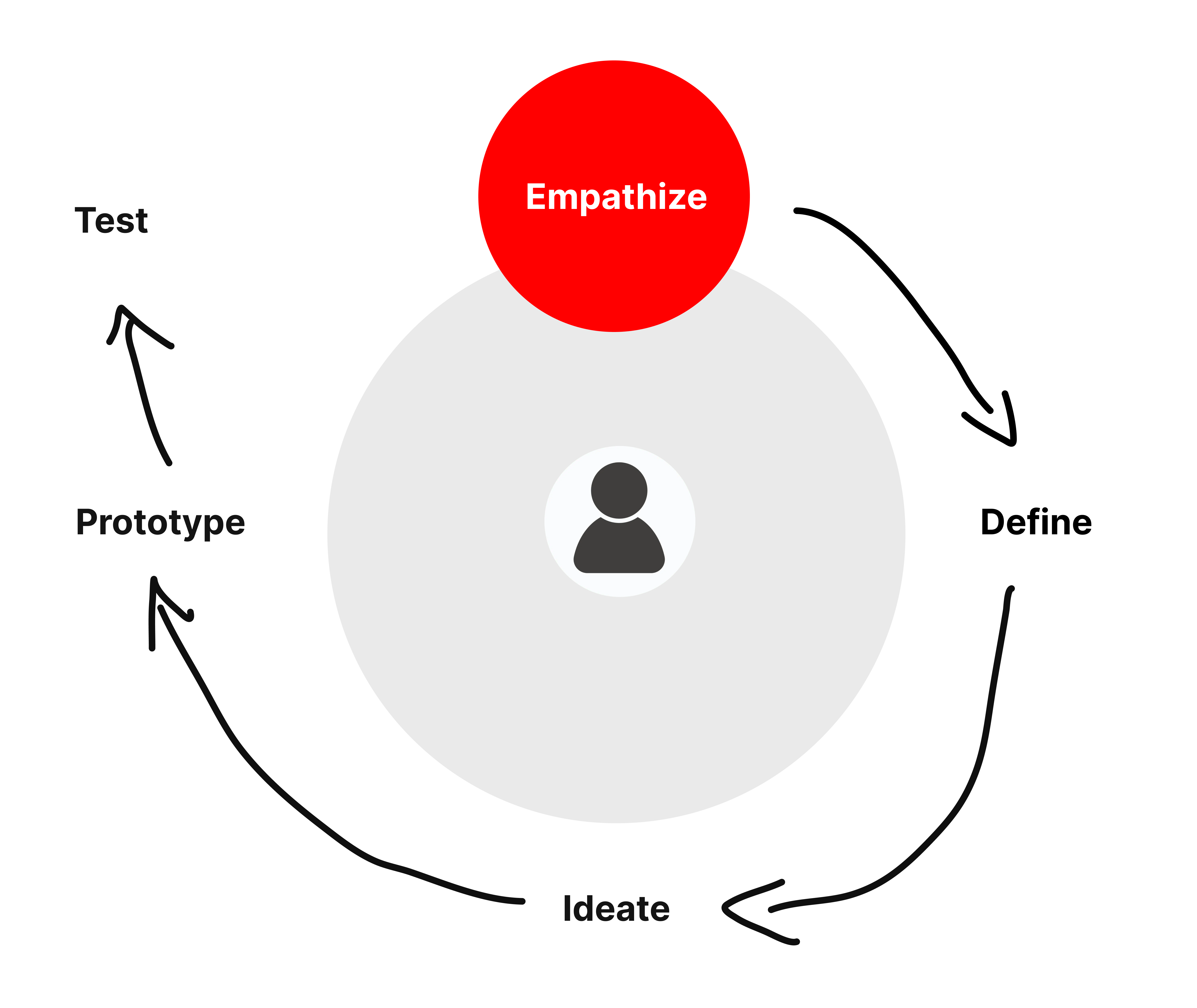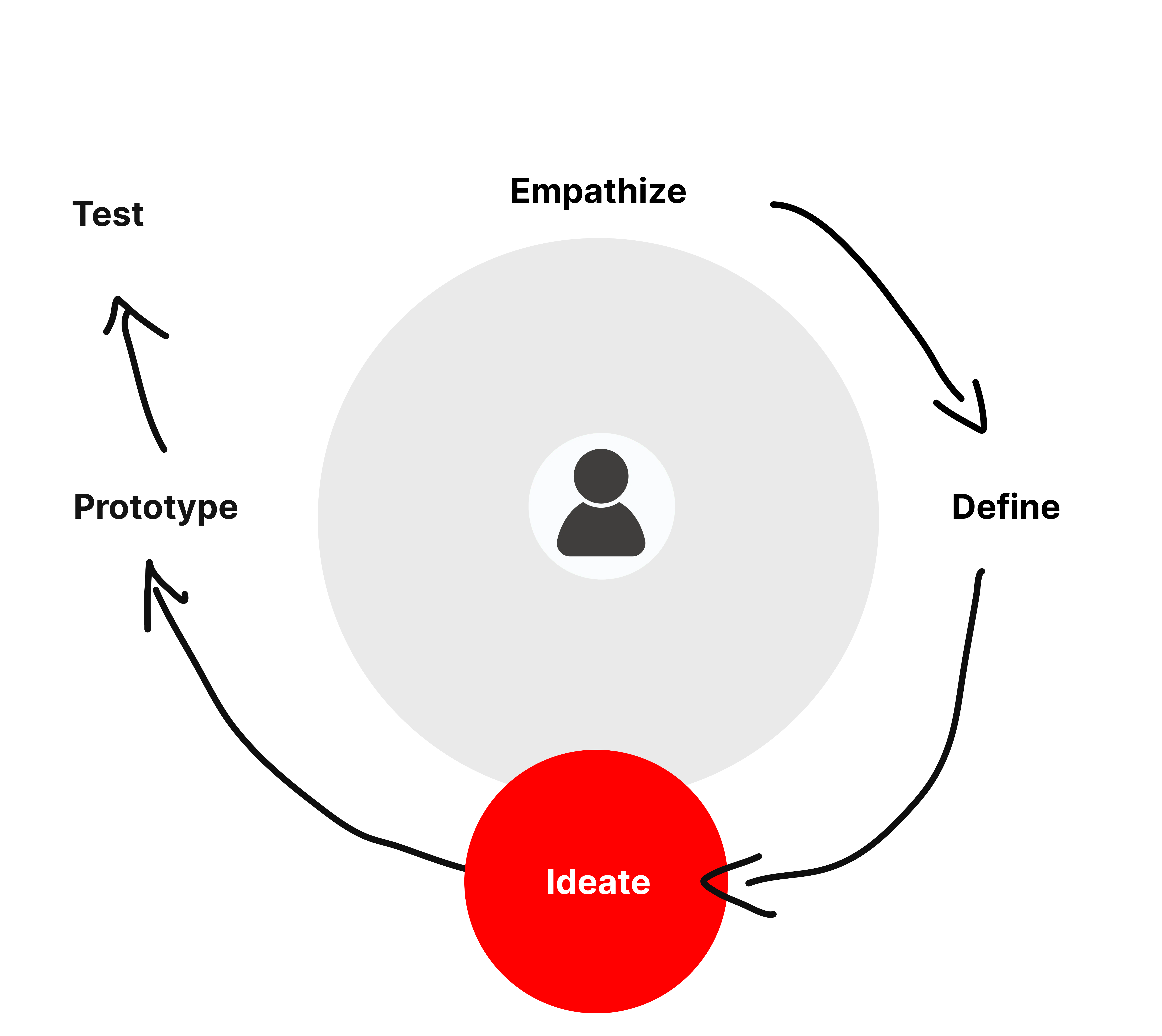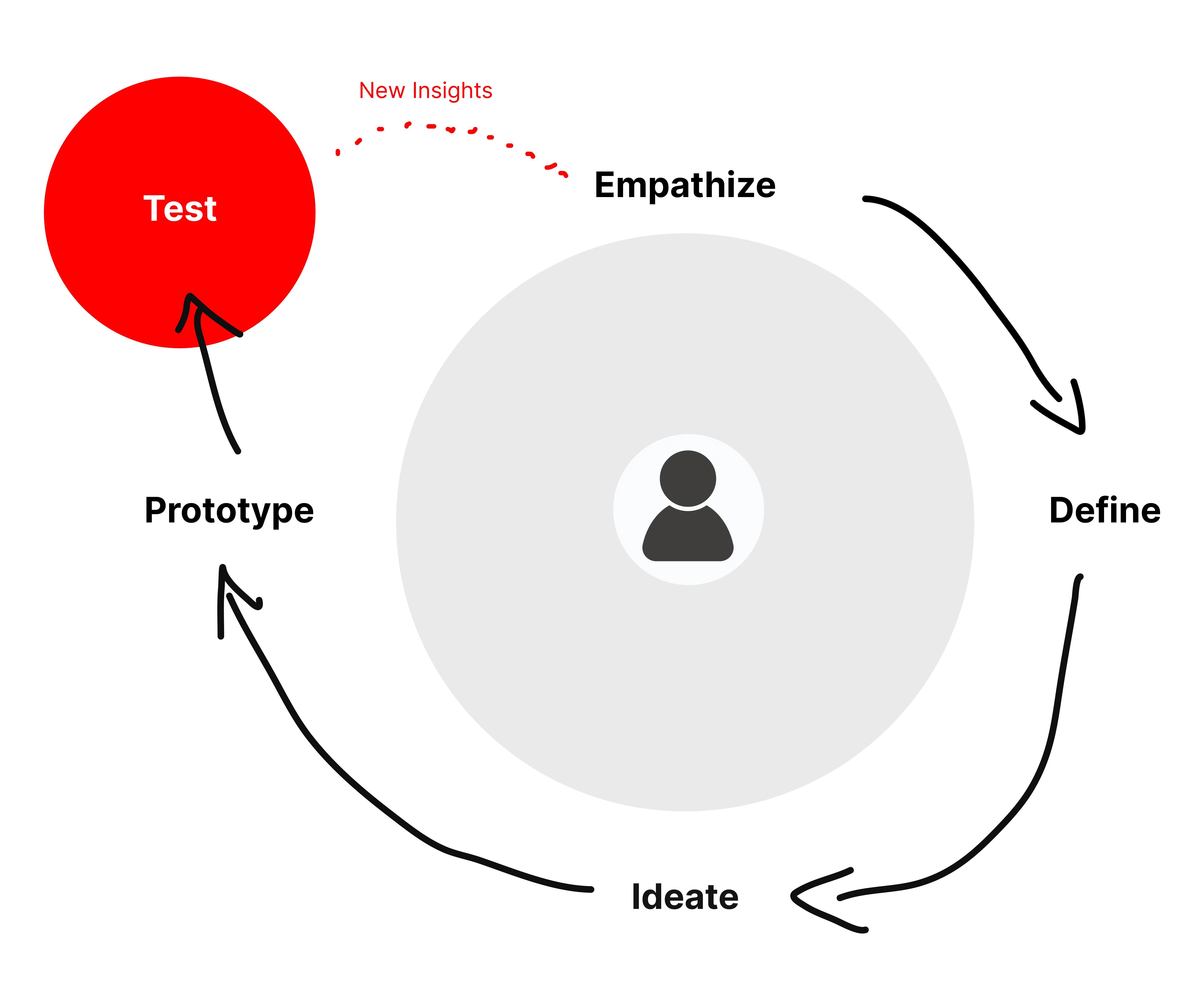Human Centered Design
Human-centered design is a problem-solving technique that puts real people at the center of the development process, allowing you to create products and services that resonate and are tailored to the needs of your target audience.
The design process
The goal is to keep the users desires, pain points, and preferences in mind at every stage of the process. In return, you’ll develop more intuitive, accessible products that are likely to generate a higher profit because your customers have already tested the solution and feel more invested in using it
1. Empathize phase
Learn about the audience for whom you are designing. Understand and describe the context of use.
Phase output
Informations about people, goals, environment, situation
Activities
- Observation of users and their behaviour
- Engage with users through informal and scheduled conversations and ask „Why …“ questions
- Immerse yourself in the users environment, experience what they experience
- Interviews, surveys, usability tests
- Emapthy maps
- Context of use
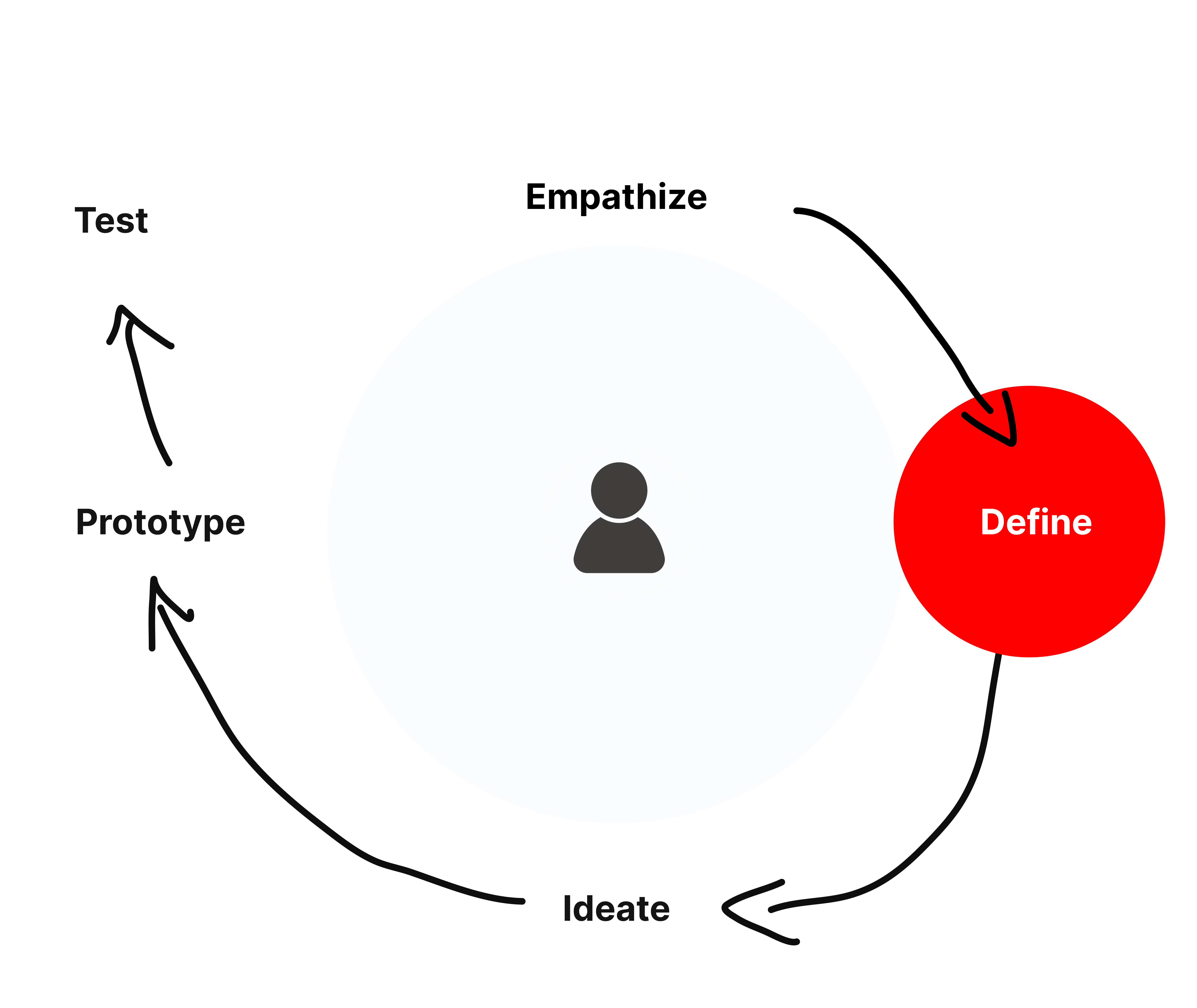
3. Ideate phase
Brainstorming and come up with as many creative solutions as possible. Generate a broad range of possible solutions.
Phase output
Ideas and Wireframes, moodboard, information architecture, mockups, screen design, conversational design.
Activities
-
Generate a broad range of possible solutions.
- Step beyond abvious solutions and build on each other`s ideas.
- Narrow down a few ideas to explore in more details.
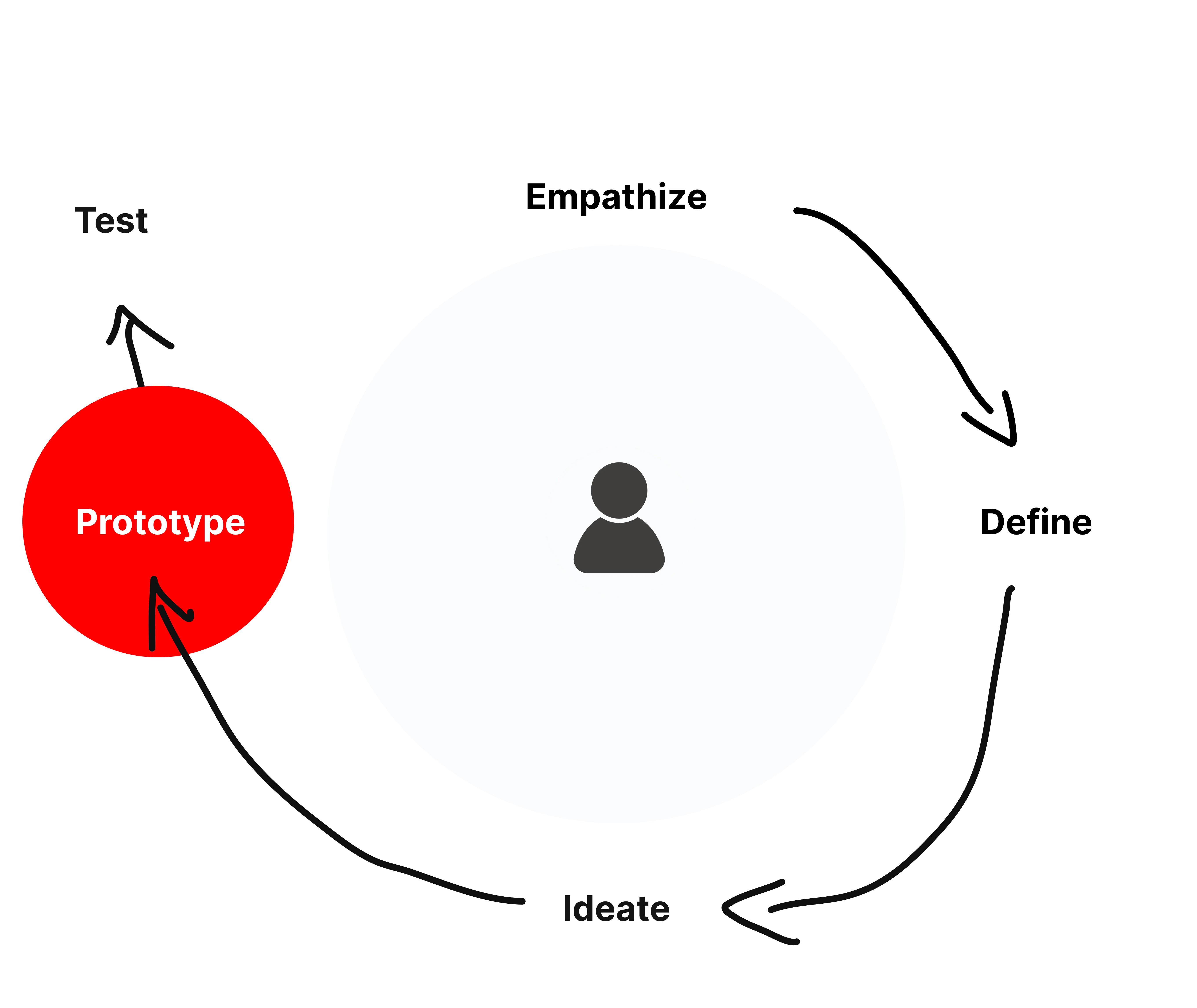
5. Test phase
Test and evaluate the solutions with real users.
Phase output
Informations about the acceptance and usability of the solution.
Activities
-
Usability tests
- User interviews
-
Review UX metrics
-
Usage tracking
The approach
By working closely with users, a company can help create products that they enjoy using and can interact with intuitively. As a result, companies may spend less time and money redoing work or helping customers learn to use their products.




